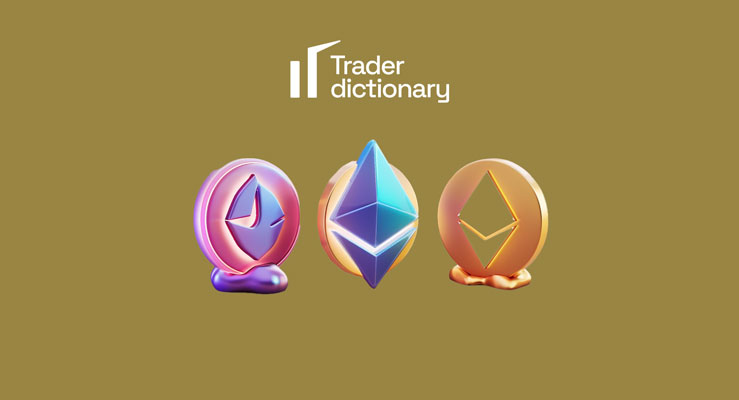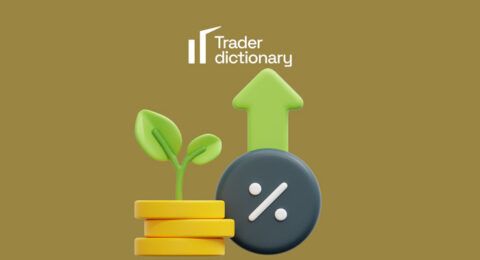In the increasingly complex and diverse world of cryptocurrencies, the term “Altcoin” has become popular, but not everyone fully understands its meaning and role. This article will provide you with an insightful and comprehensive look at Altcoins – cryptocurrencies that are not Bitcoin, from basic definitions to the factors that differentiate them from the leading cryptocurrency. Join us in exploring and understanding more about the colorful world of Altcoins!
Main Features
Altcoin is a fascinating and colorful topic in the world of cryptocurrencies, let’s explore its main features:
Diversity: Undeniably, altcoins offer a multitude of choices different from Bitcoin. Each altcoin has unique characteristics, from security mechanisms to usage goals.
Various Consensus Mechanisms: Unlike Bitcoin which uses Proof of Work, many altcoins adopt different consensus mechanisms like Proof of Stake, offering higher efficiency and lower energy consumption.
Technological Innovation: Some altcoins develop new blockchain technologies, such as integrating smart contracts, facilitating decentralized applications.
Specific Goals: Some altcoins are designed with specific purposes, like optimizing for payments, or focusing on privacy.
Community and Collaboration: Many altcoins focus on building strong communities, encouraging participation and collaboration from users.
Adaptability: Altcoins are often more agile in adapting to market and user needs due to their smaller scale and more flexible management structure.
Investment Potential: With lower values compared to Bitcoin, altcoins open up investment opportunities with lower financial thresholds, especially suitable for new investors.
Risk and Reward: Like the two sides of a coin, altcoins bring both high risks and high profit opportunities, due to price volatility and market uncertainties.
Independence: Many altcoins are independent of Bitcoin’s fluctuations, allowing them to carve out a unique path in the cryptocurrency market.
Continuous Innovation: The altcoin world is always in a state of continuous innovation, with new projects and creative ideas emerging constantly.
These are the highlights of altcoins, a field always brimming with innovation and opportunities.
Understanding Altcoins
“Altcoin” combines the words “alternative” and “coin”. This term usually encompasses all types of cryptocurrencies and tokens that are not Bitcoin. Altcoins belong to their own designed blockchains. Many altcoins are branches of Bitcoin and Ethereum – a split from the original blockchain. These forks are often created for various purposes. Most of them are a group of developers who disagree with others and split off to create their currency.
Many altcoins are used in their respective blockchains to perform certain tasks, such as ether, used in Ethereum to pay transaction fees. Some developers have created forks of Bitcoin and emerged as a competitive effort to Bitcoin in payment methods, such as Bitcoin Cash.
Different currencies, or developed from scratch, try to create a blockchain and token suitable for a specific industry or group, such as Ripple’s efforts to attract the banking industry with a faster payment system.
Dogecoin, a popular meme coin, was created as a joke. It was forked from Litecoin, which itself was a fork of Bitcoin in 2011. Whatever the purpose behind its creation, it was designed to be a digital payment method.
Altcoins try to improve the perceived limitations of any cryptocurrency and blockchain they branch from or compete with. The first altcoin was Litecoin, forked from the Bitcoin blockchain in 2011. Litecoin uses a different proof-of-work (PoW) consensus mechanism than Bitcoin, called Scrypt (pronounced es-crypt), which is less energy-consuming and faster than Bitcoin’s PoW SHA-256 mechanism.
Ether is another altcoin. However, it did not fork from Bitcoin. It was designed by Vitalik Buterin, Dr. Gavin Wood, and others to support Ethereum, the world’s largest scalable virtual machine based on blockchain. Ether (ETH) is used to pay network members for the transaction validation work their machines perform.
Types of Altcoins
Altcoins come in various forms and types. Here is a brief summary of some types of altcoins and their purposes.
An altcoin can belong to more than one category, such as TerraUSD, which is both a stablecoin and a utility token.
Payment token
Payment tokens, or “payment tokens,” are types of cryptocurrencies designed primarily for use as a means of payment. In other words, these are tokens used to buy goods and services, similar to how we use traditional currency. Bitcoin is a typical example of a payment token.
Stablecoins
Stablecoins are types of cryptocurrencies designed to maintain stable value. They are often pegged to a stable asset like the USD, gold, or even a basket of assets. The goal is to create a type of cryptocurrency that is less volatile than Bitcoin or other altcoins.
Notable stablecoins include Tether’s USDT, MakerDAO’s DAI, and USD Coin (USDC). In March 2021, major payment processor Visa Inc. (V) announced that they would begin settling some transactions on their network with USDC on the Ethereum blockchain, with plans to roll out more payment solutions.
Security Tokens
- Concept and Purpose: Security tokens are encrypted assets offered on the stock markets. Tokenization is the process of transferring value from an asset to a token, then offering it to investors. Any asset can be tokenized, such as real estate or stocks.
- Tokenization and Value Assurance: Here, the asset must be secured and held in custody. Otherwise, these tokens have no value as they do not represent anything.
- Management and Regulation: As they are designed to function like securities, security tokens are managed by the Securities and Exchange Commission. This ensures transparency and safety for investors.
- Notable Example: In 2021, Bitcoin wallet Exodus successfully completed a Reg A+ token offering approved by the Securities and Exchange Commission. This allowed converting $75 million of equity into tokens on the Algorand blockchain, a significant step in this field.
Utility tokens
Definition and Purpose: Utility tokens, or utility tokens, are primarily used to provide services or access certain functions in a blockchain network. Unlike payment tokens, their main purpose is not to buy and sell goods but to interact with specific applications or services on the blockchain.
Specific Applications: They are often used to purchase services, pay network fees, or exchange for rewards. A typical example is Filecoin, used to buy storage space on the network and secure information.
Ether (ETH) as a Utility Token: Ether, the token of Ethereum, is also a utility token. It is used to pay for transactions and network fees on the Ethereum blockchain.
Stablecoin and Utility Tokens: Another example is the stablecoin USTerra using utility tokens to maintain its exchange rate with the US dollar, by creating and burning tokens to create upward or downward price pressure.
Importance in Blockchain Networks: Utility tokens are not only bought and held on exchanges and held, but more importantly, they are used in the blockchain network to keep it running, facilitating services and applications to operate smoothly.
Thus, utility tokens play an indispensable role in supporting and developing blockchain systems, making them more flexible and useful for users.
Meme coins
Basic Concept: Meme coins, you know, are types of cryptocurrencies created based on some popular memes on the internet or elements of popular culture. They usually do not have a specific purpose or practical use value.
Popularity and Volatility: Meme coins are famous for their strong price volatility. Their prices can skyrocket or plummet in a short period, largely based on public attention and activities on social media.
Popular Example: Dogecoin (DOGE), one of the most famous examples, was initially created as a joke but later became widely popular.
Investment and Risk: Meme coins often attract investors looking for quick profits. However, they also carry high risks due to volatility and instability.
Community Factor: An important feature of meme coins is their user community. The participation and interaction of the community can significantly impact the value and popularity of them.
Meme coins are a unique phenomenon in the cryptocurrency market. They reflect the combination of finance and popular culture, creating a speculative but also very attractive investment space.
Governance Tokens
Governance tokens allow holders to have certain rights in a blockchain, such as voting rights for changes in protocol or a voice in the decision-making of a decentralized organization (DAO). As they are created for a private blockchain, they are utility tokens but have been accepted as a separate type because of their purpose of use.
Advantages and Disadvantages of Altcoins
About Advantages:
Improvement from Original Cryptocurrency: Altcoins are often seen as improved versions of the cryptocurrency they originate from, aiming to address the shortcomings of that cryptocurrency. For example, many altcoins offer faster transaction speeds or lower fees than Bitcoin.
Sustainability: Altcoins with many practical utilities often have a better chance of long-term existence. Ethereum with its Ether is a classic example, where Ether is used for executing smart contracts and decentralized applications.
Diverse Selection: Investors have a wide choice from thousands of altcoins, each serving different purposes in the cryptocurrency economy.
About Disadvantages:
Low Popularity and Market Capitalization: Altcoins are often less popular and have smaller market capitalizations than Bitcoin, leading to lower liquidity.
Difficulty in Identifying Use Case: It is not always easy to differentiate altcoins and clearly identify their use case.
Risk of Fraud and Loss of Interest: Many altcoins do not develop after launch, or exist but lose the interest of the community and developers, even some altcoins are scams.
Overall, altcoins offer diverse investment opportunities but are also full of risks. Understanding and thorough analysis are key to success when investing in the altcoin market.
Which Altcoin Should You Invest In?
When you decide to invest in altcoins, the big question is: which altcoin? Here are some expert tips on this issue:
Thorough Research: First and most importantly, you need to conduct thorough research. Learn about the history, goals, development team, and supporting community for each altcoin.
Consider Application Potential: Choose altcoins with practical application potential. Ether (ETH) from Ethereum is a good example, thanks to its smart contract ecosystem and decentralized applications.
Evaluate Safety and Security: Altcoins must have a solid infrastructure, providing good security and protection for users and transactions.
Analyze Volatility and Risk: Consider the volatility of the altcoin and define the level of risk you can accept.
Diversification: Invest in different altcoins to minimize risk. Do not put all your eggs in one basket.
Follow Trends and Update News: The cryptocurrency market is constantly changing, so stay informed and follow new trends.
Be Cautious with Hype and FOMO: Avoid investing just because of hype or fear of missing out (FOMO). Make decisions based on information and analysis, not emotions.
Should You Invest in Bitcoin or Altcoins?
Remember, investing in altcoins can bring great opportunities but also not without risks. Caution and knowledge are key to success.
When considering investing in Bitcoin or Altcoins, this decision depends on your goals and investment strategy. Here are some expert recommendations on this issue:
Bitcoin – Safety and Reliability: Bitcoin is considered “digital gold” and is often seen as a safer investment in the world of cryptocurrencies. It has a longer history, widespread acceptance, and is the main focus of the cryptocurrency market.
Altcoins – Potential and Diversity: Altcoins, on the other hand, offer a wider range of investment choices. Many altcoins offer new technological solutions and strong growth potential but also come with higher risks.
Evaluate Risk and Profit: While Bitcoin may be less volatile, altcoins can bring higher profits in a short time. However, altcoins can also quickly lose value.
Diversification – Asset Allocation: Investing in both Bitcoin and altcoins can be a good strategy to balance risk and profit potential. This helps spread risk in your investment portfolio.
Research and Monitor the Market: Always update information and research thoroughly before making investment decisions. The cryptocurrency market changes quickly and requires a deep understanding.
Finally, the decision between Bitcoin and altcoins depends on your understanding, goals, and risk tolerance. Each choice has its own characteristics and there is no absolute right or wrong answer.
Conclusion
We hope you now have a deeper and more comprehensive understanding of the diverse world of Altcoins. As you have seen, each type of Altcoin has its own advantages and disadvantages, reflecting their unique nature in the cryptocurrency market. Through this article, we hope that you have not only gained a clearer understanding of the popular types of Altcoins but also about how futures contracts related to them work. Remember, investing in cryptocurrencies always comes with risks, so always consider carefully and research thoroughly before making any investment decisions. We wish you success and invite you to follow us for more useful information about the cryptocurrency market!








